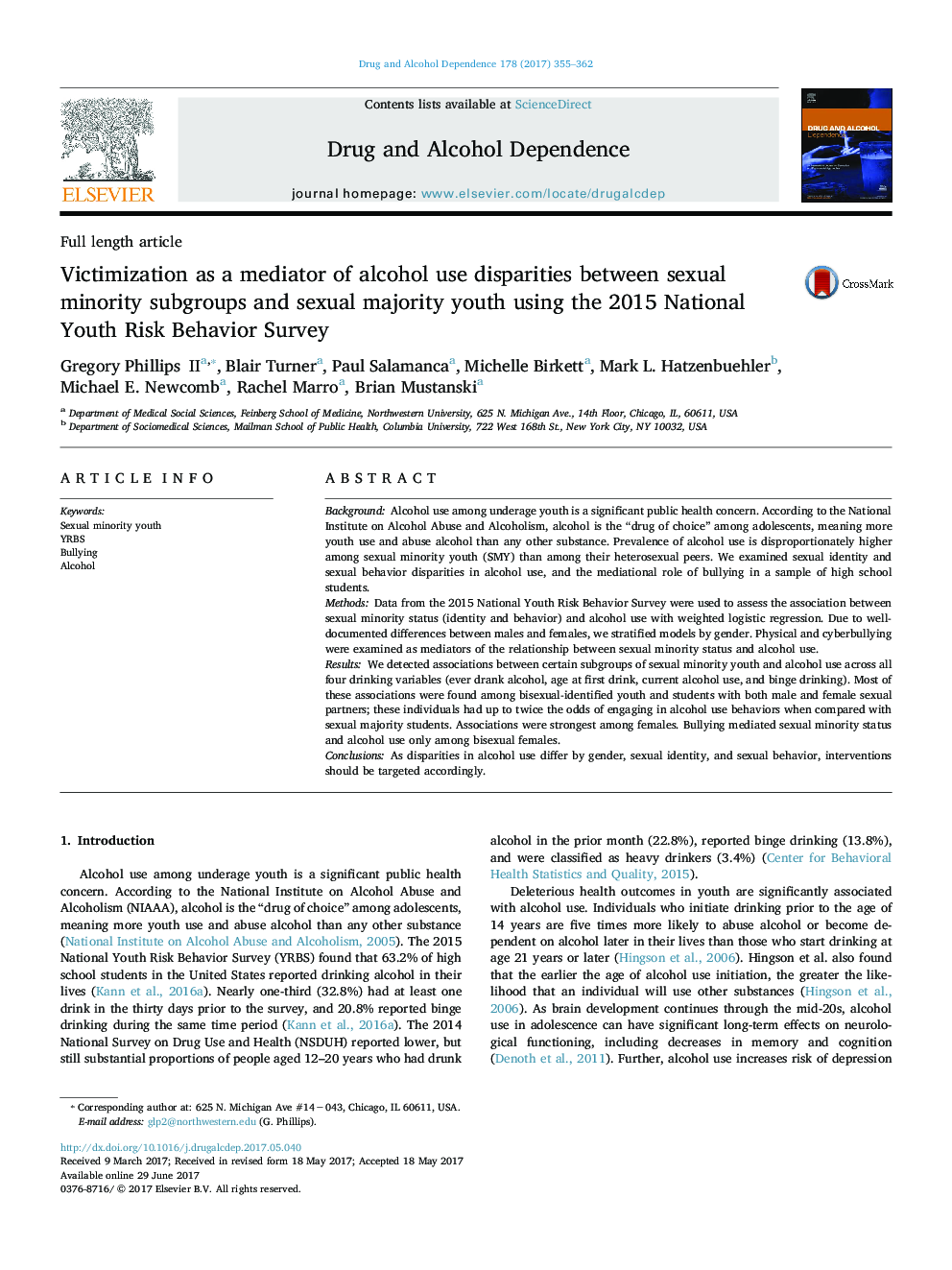| کد مقاله | کد نشریه | سال انتشار | مقاله انگلیسی | نسخه تمام متن |
|---|---|---|---|---|
| 5120364 | 1486113 | 2017 | 8 صفحه PDF | دانلود رایگان |
- Bisexual youth had twice the odds of alcohol use compared to sexual majority youth.
- Bullying mediated sexual minority status association with alcohol use in females.
- Alcohol disparities between males and females regardless of sexual identity existed.
BackgroundAlcohol use among underage youth is a significant public health concern. According to the National Institute on Alcohol Abuse and Alcoholism, alcohol is the “drug of choice” among adolescents, meaning more youth use and abuse alcohol than any other substance. Prevalence of alcohol use is disproportionately higher among sexual minority youth (SMY) than among their heterosexual peers. We examined sexual identity and sexual behavior disparities in alcohol use, and the mediational role of bullying in a sample of high school students.MethodsData from the 2015 National Youth Risk Behavior Survey were used to assess the association between sexual minority status (identity and behavior) and alcohol use with weighted logistic regression. Due to well-documented differences between males and females, we stratified models by gender. Physical and cyberbullying were examined as mediators of the relationship between sexual minority status and alcohol use.ResultsWe detected associations between certain subgroups of sexual minority youth and alcohol use across all four drinking variables (ever drank alcohol, age at first drink, current alcohol use, and binge drinking). Most of these associations were found among bisexual-identified youth and students with both male and female sexual partners; these individuals had up to twice the odds of engaging in alcohol use behaviors when compared with sexual majority students. Associations were strongest among females. Bullying mediated sexual minority status and alcohol use only among bisexual females.ConclusionsAs disparities in alcohol use differ by gender, sexual identity, and sexual behavior, interventions should be targeted accordingly.
Journal: Drug and Alcohol Dependence - Volume 178, 1 September 2017, Pages 355-362
